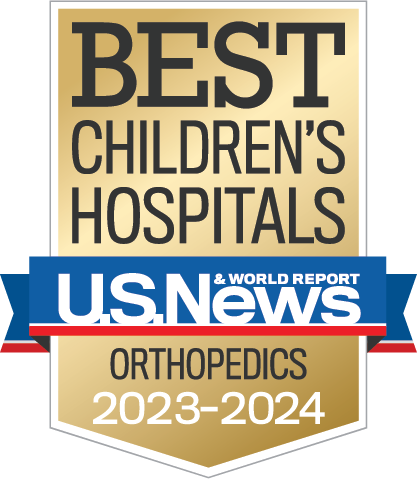- Doctors & Departments
-
Conditions & Advice
- Overview
- Conditions and Symptoms
- Symptom Checker
- Parent Resources
- The Connection Journey
- Calm A Crying Baby
- Sports Articles
- Dosage Tables
- Baby Guide
-
Your Visit
- Overview
- Prepare for Your Visit
- Your Overnight Stay
- Send a Cheer Card
- Family and Patient Resources
- Patient Cost Estimate
- Insurance and Financial Resources
- Online Bill Pay
- Medical Records
- Policies and Procedures
- We Ask Because We Care
Click to find the locations nearest youFind locations by region
See all locations -
Community
- Overview
- Addressing the Youth Mental Health Crisis
- Calendar of Events
- Child Health Advocacy
- Community Health
- Community Partners
- Corporate Relations
- Global Health
- Patient Advocacy
- Patient Stories
- Pediatric Affiliations
- Support Children’s Colorado
- Specialty Outreach Clinics
Your Support Matters
Upcoming Events
Colorado Hospitals Substance Exposed Newborn Quality Improvement Collaborative CHoSEN Conference (Hybrid)
Monday, April 29, 2024The CHoSEN Collaborative is an effort to increase consistency in...
-
Research & Innovation
- Overview
- Pediatric Clinical Trials
- Q: Pediatric Health Advances
- Discoveries and Milestones
- Training and Internships
- Academic Affiliation
- Investigator Resources
- Funding Opportunities
- Center For Innovation
- Support Our Research
- Research Areas

It starts with a Q:
For the latest cutting-edge research, innovative collaborations and remarkable discoveries in child health, read stories from across all our areas of study in Q: Advances and Answers in Pediatric Health.


Skiing & Snowboarding
We care for patients’ growing muscles, joints and bones through sports medicine, surgery, rehabilitation and research.

At the Sports Medicine Center at Children’s Hospital Colorado, we work specifically with young athletes. Our sole focus is to help your child or teen play, excel and enjoy the sports they love, including skiing and snowboarding.
Why are we experts at caring for kids and young athletes who ski and snowboard?

Snow sports are some of the most popular winter sports among young athletes we see, and we take pride in helping our patients stay healthy and active on the mountain. To best care for skiers and boarders, we have a special team of sports medicine experts who specialize in treating common snow sport injuries. We also understand the importance of safely getting your young athlete back on the slopes as soon as possible.
What is the impact of skiing and snowboarding on the body?
Skiing and snowboarding are extremely physically demanding sports, requiring high endurance and core strength, no matter what the age of the athlete. Athletes often snowboard or ski for an entire day, sometimes back-to-back days, which greatly fatigues the body and increases the risk of injury.
We also see a large variety of non-contact injuries, many of which can be prevented. These types of non-contact injuries usually involve the muscles, joints and ligaments of the knee and ankle due to the high degree of leg movement involved in snow sports. The Sports Medicine team at Children’s Colorado is passionate about educating athletes, parents and coaches on ways to prevent these injuries.
What are common ski injuries?
The most common ski injuries include knee, ankle and thumb sprains.
What are common snowboard injuries?
Injuries to the wrist, shoulder and head are more commonly seen in snowboarding. Wrist fractures (broken wrists) commonly happen when the hands and arms are used to brace falls.
What injuries can be caused from both skiing and snowboarding?
- Arm and leg fractures (broken bones)
- Concussions, usually caused from falls on ice, collisions with other athletes, trees or the ground
- Ligamentous knee injuries such as medial collateral ligament (MCL) and anterior cruciate ligament (ACL) tears, with MCL strains being the most common knee injury
- Ankle sprains
- Muscle strains of the lower extremities (legs) and back
Resources and tips for injury prevention
Regardless of a young athlete’s ability on the mountain, wearing appropriate protective equipment is the best defense against injury. Skiers and snowboarders should wear helmets to prevent head injury, goggles to prevent eye injury, and wrist guards. More aggressive skiers and boarders who spend most of their time in the terrain parks or on extreme terrain should consider spine and body protection.
Snow sports are strenuous activities with heavy demands on the muscles, tendons, ligaments and bones of the body. It is important that athletes are in good physical and cardiovascular condition prior to attempting these activities. We recommend that beginners take professional lessons to develop skills and critical safety tips such as how to take a fall on the snow.
Learn more about our Sports Medicine Center.
Need Advice for Your Young Athlete?
Check out our sports articles, written by our Sports Medicine experts. You'll find advice and tips for parents, coaches, trainers and young athletes.



 720-777-0123
720-777-0123



